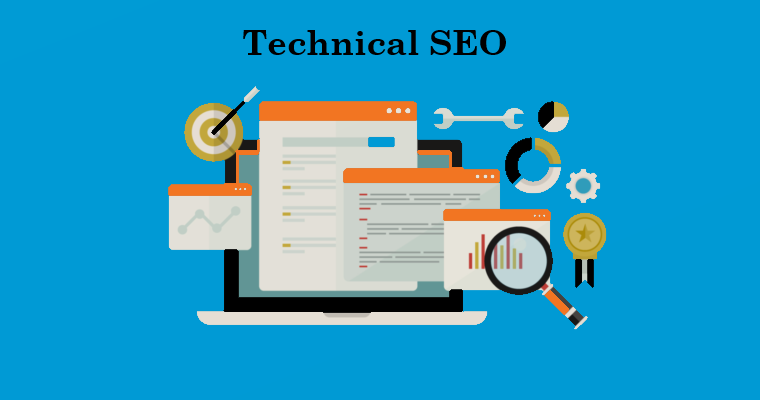Technical SEO is an essential component of the whole SEO process. If you have challenges with technical SEO, your SEO efforts are unlikely to produce the desired outcomes. As a result, it’s critical that you know what technical SEO is and how to do it correctly. The good news is that you won’t have to deal with it again once you’ve completed a technical SEO assessment of your website and fixed any potential issues.
Pillars of Technical Optimization
Technical SEO is the process of upgrading a website’s technical elements in order to improve the ranking of its pages in search engines. Making a website quicker, easier to crawl, and understandable for search engines are the cornerstones of technical optimization. Technical SEO is part of on-page SEO, which focuses on improving components of your website to enhance ranks. Off-page SEO, on the other hand, focuses on improving a website’s visibility through other ways.
What Is the Importance of Technical SEO?
There is no single plug-in or hack that will guarantee your website’s “excellent” technical SEO. Having said that, there are a lot of things you can do on your own to enhance your technical SEO and put you ahead of the competition.
Why do you want to prioritize technical SEO? Because technical SEO is what tells search engines like Google that you have a high-quality website. This is crucial because it has the potential to influence search engines to give you a higher position. After all, their primary goal is to provide consumers with the best possible results for their chosen keywords, and technical SEO is a technique to verify your website complies.
Ascend in the Rankings
Technical SEO isn’t going to send you to the top of Google or Bing on its own. However, disregarding technical SEO will ensure that this does not occur. Search engines will penalize a slow or buggy website, preventing you from accomplishing your digital marketing objectives. As a result, we recommend that you take technical SEO seriously. Examine your website and put some of the tips above into action. They will, in the end, contribute significantly to the success of your website’s technical SEO.
Why Should you Modify the Technical Aspects of your Website?
Google and other search engines seek to provide the best possible results for their consumers’ queries. As a consequence, Google’s robots crawl and evaluate websites using a number of criteria. Some elements, such as how quickly a website loads, are based on the user’s experience. Other elements aid search engine robots in determining the content of your pages. Structured data, for example, accomplishes this. As a result, boosting technical components aids search engines in crawling and comprehending your site. You may be rewarded with higher rankings or even richer outcomes if you do this well. It also works the other way around: major technological errors on your website might cost you money. You wouldn’t be the first to unintentionally include a trailing slash in the wrong location in your robots.txt file, preventing search engines from scanning your site fully.
However, it is a frequent misconception that you should concentrate entirely on the technical features of a website in order to please search engines. In the first instance, a website should operate properly for your users — it should be fast, clear, and simple to use. Fortunately, laying a solid technical basis typically results in a better user and search engine experience.
What Are the Characteristics of a Website That Has Been Technically Optimized?
A technically sound website loads quickly for users and is simple for search engine robots to crawl. A correct technological arrangement assists search engines in understanding what a site is about and minimizes confusion caused by, for example, repeating material. Furthermore, it does not direct users or search engines to dead-end streets via broken links. We’ll go over some key criteria of a technically optimized website shortly.
1. It is quick
Nowadays, web pages must load quickly. People are impatient and do not like waiting for a page to load. According to data from 2016, 53% of mobile internet users will abandon a website if it does not load within three seconds. People will become frustrated and walk on to another website if your website is slow, and you will lose all of that traffic.
Google understands that sluggish web pages provide a less-than-ideal user experience. As a result, they favor online pages that load quickly. As a result, a slow web page ranks lower in search results than its speedier counterpart, resulting in even less traffic. Page experience, which refers to how quickly visitors perceive a web page to be, will even become a ranking element in 2021. So you’d better get ready!
Do you want to know if your website is fast enough? Learn how to do a simple speed test on your website. Most tests will also provide you with suggestions on how to improve. You can also look at the Core Web vitals, which are used by Google to determine Page experience. We’ll also walk you through some typical site performance optimization tips.
2. It can be crawled by search engines
To crawl or spider your website, search engines use robots. Search engines utilise robots to crawl or spider your website. Links are used by robots to discover content on your website. They’ll know what the most significant information on your site is if you have a good internal linking structure.
But there are many ways to guide robots. If you don’t want them to get to a specific page, you can restrict them from crawling it. You can even order them to crawl a page but not to reveal it in the search results or to follow any of the links on it.
3. It is free of dead links
It’s already been established that slow websites are inconvenient. Landing on a page that doesn’t exist is possibly even more unpleasant for visitors than a slow page. If a visitor clicks on a link that leads to a non-existent page on your site, they will be directed to a 404 error page. That’s the end of your painstakingly crafted user experience!
Furthermore, search engines despite finding these mistake pages. And, because they follow every link they come across, even if it’s buried, they tend to locate even more dead links than visitors.
4. It doesn’t cause duplicate content to be picked up by search engines
Search engines may become confused if the same material appears on many pages of your site – or even on other websites. Because, if these pages all have the same information, which one should be ranked first? As a result, all pages with the same content may be ranked lower.
Unfortunately, you may be suffering from a duplicate content problem without even realizing it. Different URLs can display the same material for technological reasons. This makes no difference to a visitor, but it does for a search engine, which will see the same information under a new URL.
This problem, fortunately, has a technical solution. You can specify what the original page – or the page you’d like to rank in the search engines – is using the so-called canonical link element. A canonical URL for a page can be easily set in Yoast SEO. Yoast SEO also provides self-referencing canonical links to all of your pages to make things easier for you. This will help you avoid issues with duplicate material that you may not even be aware of.
5. It is safe
A secure website is one that is technically optimized. Nowadays, making your website safe for visitors in order to preserve their privacy is necessary. There are several steps you can take to make your (WordPress) website more secure, but one of the most crucial is to utilize HTTPS.
HTTPS ensures that no one may eavesdrop on data exchanged between the browser and the website. As a result, if someone logs in to your site, their credentials are secure. To put HTTPS on your site, you’ll need an SSL certificate. Because Google recognizes the importance of security, it has made HTTPS a ranking signal: secure websites are ranked higher than their unsecured counterparts.
In most browsers, you can quickly verify if your website is HTTPS. If it’s safe, you’ll notice a lock on the left-hand side of your browser’s search box. You (or your developer) have some work to do if you encounter the phrase “not secure.”
So, What’s the Final Word?
The secret to successful SEO efforts and higher conversions is to invest in technical SEO. In most circumstances, investing in technical SEO will save you a lot of money in the long run and will help you prevent problems that will affect your other SEO efforts later on. Its purpose is to eliminate issues and work in tandem with on-page and off-page SEO to improve the website’s visitor experience. Yukti Digital offers great search engine optimization services to help businesses improve their website performance and increase organic traffic. Please contact us if you have any questions about technical SEO or other services.






